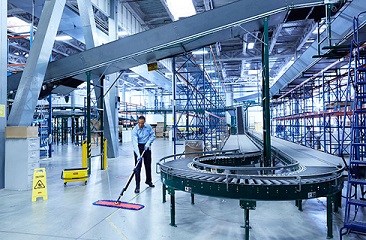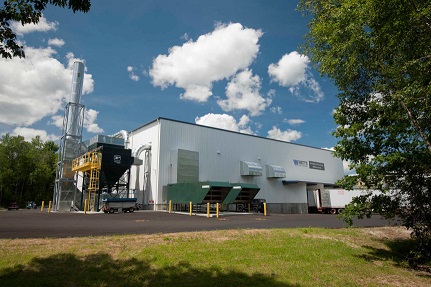Title Page
-
Site conducted
-
TPT Systems Inc. 8600 Escarpment Way Milton, ON L9T 0M1
-
Conducted on
-
Conducted By
1- Buildings and Facilities
1.1 Design and Construction
-
Facility grounds are well maintained including roads, parking lots, grass and drain areas.
-
REFERENCE: Manufacturing facilities inside and outside are clean
[This is an example of how you can use iAuditor to include best practice reference images in your templates to assist with inspections] -
-
There is adequate space provided for orderly placement of equipment and materials to prevent mix-ups and contamination.
-
Appropriate environmental controls exist and are maintained (controlled temperature, air filtration, humidity, lighting, etc...).
-
All food contact surfaces are made of materials appropriate to the application (i.e. stainless steel vs. aluminum).
-
All water systems are adequately protected against back flow.
-
There are adequate hand-washing facilities for rest rooms, break areas and manufacturing areas.
-
Floors, walls, ceilings, doors and windows are completely sealed to prevent entry of pests.
-
Loading dock doors are flush to the floor when closed.
-
There is separation of defined areas and adequate controls to prevent contamination.
1.2 Construction and Maintenance
-
Non-toxic and corrosion-resistant materials such as stainless steel are being used around the process.
-
Seams are well bonded and smooth.
-
Lubricants and chemicals used for operation of equipment are approved for food grade applications.
-
A preventative maintenance program developed and implemented for major equipment.
-
Weighing, measuring, monitoring, and testing equipment critical for ensuring quality should be calibrated according to written procedures, established schedules and using certified or traceable standards.
1.3 Pest control program
-
A documented pest control program is in place.
-
Building exterior is protected from rodent and pest entry.
-
Map with locations of all traps identified
-
The pest control program includes frequent inspections.
-
The supplier maintains and enforces written procedures for the application of pesticides.
-
All chemicals used in pest control are accurately labeled and stored securely
-
The facility audits pest control operator performance.
1.4 Cleaning & Sanitation
-
There is a written and comprehensive plant and equipment sanitation program.
-
Facility and equipment maintenance ensures safe manufacture of wholesome foods.
-
There are written operating procedures or work instructions.
-
Brushes and other utensils used for cleaning food contact surfaces are controlled and clearly identified.
-
Measures are in place to verify and monitor the effectiveness of cleaning methods.
-
Cleaning and sanitization procedures are validated and well-documented as such.
-
Cleaning and usage logs established for major equipment to include: dates, products, lots#, person who used, person who cleaned.
-
Hoppers, tanks and similar food receptacles must be properly covered.
-
A chemical control program manages the use, storage, and handling of non-food chemicals at the manufacturing facility.
2 - Materials Management
2.1 General Controls
-
There should be written procedures describing the receipt, identification, quarantine, storage, handling, sampling, testing, and approval or rejections of materials.
-
Appropriate environmental controls exist and are maintained (controlled temperature, air filtration, humidity, lighting, etc...).
2.2 Traceability
-
Lot trace system with distinctive lot number for all raw materials, in-process materials, finished goods, and packaging components.
-
Establish and document First-in/First out(FIFO) procedures for all materials and goods.
2.3 Storage
-
Materials should be handled and stored in a manner to prevent degradation, contamination, and cross-contamination.
-
Temperature and humidly
-
Store and/or control rejected materials in segregated facility so as to prevent usage.
-
Warehouse area is clean and orderly - 18"" perimeter is maintained.
7 - Personnel and Training
7.1 Qualifications and Experience
-
An organizational chart exists which reflects the most current reporting structure.
-
Job descriptions throughout the organization include responsibilities for supporting quality objectives.
-
An adequate number of qualified personnel exist to perform functions in manufacturing, packaging and QA.
7.2 Hygienic Practices
-
Are there hygienic practices in place to protect against contamination of food?
-
Personnel should wear clean clothing suitable for the manufacturing activity. Additional protective apparel, such as head, face, hand, and arm coverings should be worn, when necessary.
-
Any person, by medical examination or supervisory observation, that is shown to have, or appears to have, an illness, or open lesions, by which there is reasonable possibility of food, food-contact surfaces, or food-packaging materials being contaminated, shall be excluded from any operations until condition is corrected.
-
Personnel shall be instructed to report such conditions to supervisors.
-
Designated areas outside of processing zones have been provided for clothing and other personal belongings (Jackets, cell phones, bags, radios, CD players, headsets, pagers).
-
Consumption of food & beverages, chewing of gum, or the use of tobacco products are strictly prohibited in processing areas.
-
Proper hand washing practices are reinforced with signs posted in breakrooms, production areas, and washrooms.
-
Written procedures exist which address and include the control and proper supervision of the above practices.
7.3 Training Procedures
-
Have procedures been established and used for identifying training needs? Training procedure(s) shall exist for all levels including part-time and temporary staff, management, visitors, contract/construction personnel, consultants, government and customer auditors.
-
Procedures address training schedules such as upon hire, future training requirements, follow up and/or retraining frequencies.
-
Training effectiveness is evaluated on a periodic basis.
-
Employee training covers general topics such as cGMP, sanitation, safety, environment, SOPs & MSDS. In addition, training is provided on specifc work instructions, procedures, equipment operations, or as required to perform a specific job function.
-
Are qualifications and training records maintained for all personnel?
-
Are the qualifications and experience requirements for trainers defined in the training procedures?
-
Training records must be maintained for all personnel and should include: Date, Topic, Name of Instructor, Employee Signatures, Tests, Quizzes, etc.
-
Specific training requirements are defined for each unique job description or job function.
8 - Purchasing and Customer Service
8.2 Customer Service
-
Is there evidence of a Customer Service System?
-
Company contact list.
-
Is there a process for requesting samples or information?
8.3 General
-
Are there contingency plans for serious problems (fire, tornado, flood, etc.)?
-
Is there a system to identify facility, machine, and operational needs for the future?
-
An established complaint investigation and response program exists
-
Do you have a recall procedure?
-
Do you perform mock recalls? On what frequency? Have you performed one recently? What were the results?
-
Do you have a documented stability program?
Completion
Completion
-
Recommendation
-
Full Name and Signature
















